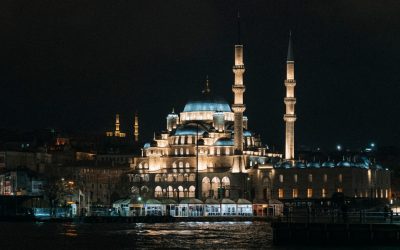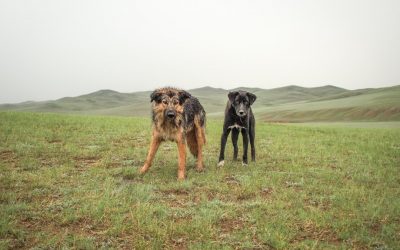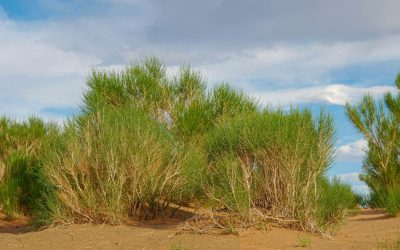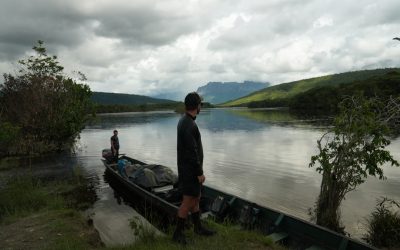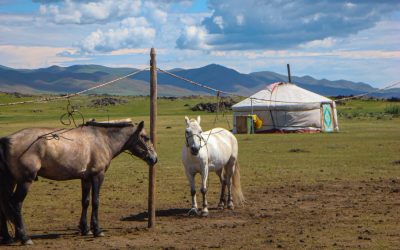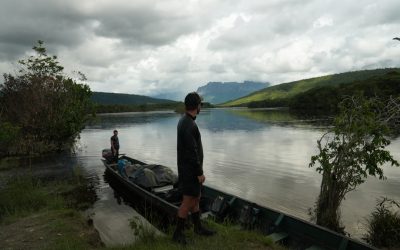World Geography
Geography is the study of the Earth’s landscapes, environments, and the relationships between people and their surroundings. It encompasses both the physical aspects of the Earth, such as its landforms, bodies of water, and climate, as well as the human aspects, including population distribution, cultures, and economies. World geography is a broad field that seeks to understand the complexities of our planet and how humans interact with it. By studying world geography, we can gain a deeper appreciation for the diversity of our planet and the interconnectedness of its various regions.
Geography is a multidisciplinary field that draws on elements of physical science, social science, and humanities. It involves the use of maps, spatial analysis, and geographic information systems (GIS) to understand the Earth’s surface and the processes that shape it. World geography also encompasses the study of human geography, which examines the ways in which people and their activities are distributed across the Earth. By understanding world geography, we can better appreciate the environmental, cultural, and economic challenges facing different regions of the world. This knowledge is crucial for addressing global issues such as climate change, resource management, and international development.
The Five Oceans and Seven Continents
The Earth’s surface is divided into five major oceans: the Pacific, Atlantic, Indian, Southern (or Antarctic), and Arctic Oceans. These vast bodies of water play a crucial role in regulating the Earth’s climate and supporting diverse marine ecosystems. The oceans also serve as important transportation routes and a source of food and other natural resources for human societies around the world.
In addition to the oceans, the Earth’s landmasses are divided into seven continents: Africa, Antarctica, Asia, Europe, North America, Australia (or Oceania), and South America. Each continent has its own unique physical and cultural characteristics, shaped by millions of years of geological processes and human history. From the deserts of Africa to the rainforests of South America, the continents offer a rich tapestry of landscapes and environments for exploration and study.
Major Mountain Ranges and Deserts
The Earth’s surface is also marked by major mountain ranges and deserts that have shaped the planet’s physical and cultural landscapes. The Himalayas, for example, are the highest mountain range in the world and are home to diverse ecosystems and cultures in countries such as India, Nepal, and Bhutan. The Andes in South America, the Rockies in North America, and the Alps in Europe are other prominent mountain ranges that have influenced human settlement patterns and economic activities.
Deserts cover about one-third of the Earth’s land surface and are characterized by low precipitation and extreme temperatures. The Sahara Desert in Africa is the largest hot desert in the world, while the Gobi Desert in Asia is one of the largest cold deserts. Deserts are not only home to unique flora and fauna but have also been important trade routes and cultural crossroads throughout history.
Climate Zones and Biomes
The Earth’s climate is influenced by a variety of factors, including latitude, altitude, ocean currents, and prevailing winds. As a result, the planet is divided into different climate zones, each with its own characteristic weather patterns and ecosystems. The equator, for example, experiences a tropical climate with high temperatures and heavy rainfall, while the polar regions have a cold and dry climate.
These climate zones give rise to different biomes, or large ecological areas characterized by distinct plant and animal communities. The tropical rainforest biome, found near the equator, is home to a diverse array of species and is vital for regulating the Earth’s climate. The grasslands biome, found in regions such as the African savannah and North American prairies, supports grazing animals and has been important for human agriculture throughout history.
Human Geography and Population Distribution
Human geography examines the ways in which people and their activities are distributed across the Earth’s surface. It encompasses topics such as population growth, migration patterns, urbanization, and cultural diversity. Understanding human geography is crucial for addressing global challenges such as poverty, inequality, and environmental degradation.
Population distribution is uneven across the world, with some regions experiencing rapid population growth while others are declining. The majority of the world’s population lives in Asia, particularly in countries such as China and India. Urban areas are also growing rapidly, with more than half of the world’s population now living in cities. This trend has significant implications for infrastructure development, resource management, and social inequality.
Historical and Cultural Geography
Historical geography examines how human activities have shaped the Earth’s landscapes over time. It explores topics such as colonialism, trade routes, and the rise and fall of empires. Cultural geography focuses on how human cultures have developed in different regions of the world and how they interact with their environments.
The Silk Road, for example, was an ancient trade route that connected China with Europe and facilitated the exchange of goods, ideas, and technologies across Eurasia. This historical trade route had a profound impact on the development of cultures and economies along its path. Similarly, cultural geographers study how different societies have adapted to their environments through practices such as agriculture, architecture, and religious beliefs.
The Importance of Geographic Knowledge
Geographic knowledge is crucial for addressing global challenges such as climate change, resource management, and international development. By understanding world geography, we can better appreciate the environmental, cultural, and economic challenges facing different regions of the world. This knowledge is crucial for addressing global issues such as climate change, resource management, and international development.
Geographic knowledge also helps us to understand our interconnectedness with other regions of the world. By studying world geography, we can gain a deeper appreciation for the diversity of our planet and the interconnectedness of its various regions. This understanding can foster a sense of global citizenship and empathy for people from different cultures and backgrounds.
In conclusion, world geography is a complex and multifaceted field that encompasses both physical and human aspects of the Earth’s landscapes. By studying world geography, we can gain a deeper appreciation for the diversity of our planet and the interconnectedness of its various regions. This knowledge is crucial for addressing global challenges such as climate change, resource management, and international development. It also helps us to understand our interconnectedness with other regions of the world and fosters a sense of global citizenship.
FAQs
What is world geography?
World geography is the study of the Earth’s landscapes, environments, and the relationships between people and their environments. It encompasses the physical features of the Earth, as well as the human activity that takes place on it.
Why is world geography important?
World geography is important because it helps us understand the world around us. It provides insights into the physical and human processes that shape our planet, and helps us make informed decisions about how to interact with our environment.
What are the main branches of world geography?
The main branches of world geography include physical geography, which focuses on the Earth’s natural features and processes, and human geography, which examines the relationships between people and their environments.
How does world geography impact our daily lives?
World geography impacts our daily lives in numerous ways, from influencing the weather and climate we experience, to shaping the availability of natural resources and influencing the distribution of populations and cultures around the world.
What are some key concepts in world geography?
Key concepts in world geography include location, place, human-environment interaction, movement, and region. These concepts help geographers understand and interpret the world around them.
Cultural or Historical Sites of Bangladesh: Important Cultural Landmarks or Historical Sites In Bangladesh
Bangladesh, a country located in South Asia, is known for its rich cultural heritage. With a history that dates back thousands of years, Bangladesh has been influenced by various civilizations and empires, resulting in a diverse and vibrant culture. From ancient archaeological sites to magnificent architectural marvels, Bangladesh offers a treasure trove of cultural experiences for visitors to explore and discover. Summary Bangladesh has a rich cultural heritage that spans over thousands of years. The country is home to numerous historical sites that are a must-visit for anyone interested in history and culture. The ancient civilization of Bangladesh is a fascinating subject that offers a glimpse into the country’s past. Bangladesh is known for its architectural marvels, which are a testament to the country’s rich cultural heritage. Religious sites in Bangladesh hold great significance and are an important part of the country’s cultural fabric. Discover the Rich Cultural Heritage of Bangladesh Bangladesh’s cultural heritage is a reflection of its history and the various influences it has encountered over the centuries. The country’s history can be traced back to ancient times, with evidence of human habitation dating back to the Indus Valley Civilization. Over the years, Bangladesh has been ruled by various empires and dynasties, including the Maurya Empire, Gupta Empire, Pala Empire, and the Mughal Empire. Each of these empires has left its mark on the culture and heritage of Bangladesh. Top 10 Must-Visit Historical Sites in Bangladesh 1. Sundarbans: Located in the southwestern part of Bangladesh, the Sundarbans is a UNESCO World Heritage Site and one of the largest mangrove forests in the world. It is home to...
Population Density of Bahrain
Population density refers to the number of people living in a specific area, usually measured per square kilometer. It is an important indicator that helps us understand how crowded or sparsely populated an area is. In the case of Bahrain, a small island country in the Persian Gulf, population density is particularly significant due to its limited land area and growing population. Bahrain has experienced rapid population growth in recent decades, which has led to increased urbanization and higher population density in certain areas. Understanding the factors that contribute to population density in Bahrain is crucial for effective urban planning, resource allocation, and sustainable development. Summary Bahrain has a high population density, with over 1.6 million people living in an area of just 765.3 square kilometers. The population density in Bahrain has increased significantly over the past century, due to factors such as urbanization and rural-urban migration. Urbanization has been a major driver of population density in Bahrain, with the majority of the population living in urban areas. Rural-urban migration has also contributed to population density in Bahrain, as people move from rural areas to urban centers in search of better economic opportunities. Population density varies across Bahrain’s regions, with the highest densities found in the capital city of Manama and the surrounding areas. Historical Overview of Population Density in Bahrain Bahrain’s population density has undergone significant changes over time. In the early 20th century, the country had a relatively low population density, with most people living in rural areas and engaged in traditional occupations such as fishing and pearl diving. However, the discovery of oil in the 1930s...
Terrain and Topography of Bahrain: mountains, valleys, and plains.
Bahrain, a small island country located in the Persian Gulf, is known for its rich history, vibrant culture, and stunning landscapes. Understanding Bahrain’s topography is crucial in order to appreciate the country’s unique characteristics and the impact it has on various aspects of life. From the flat plains to the desert landscape, from the hills and mountains to the wadis, Bahrain’s topography plays a significant role in shaping its economy, culture, history, agriculture, urban planning, tourism, and environment. Summary Bahrain’s terrain is mostly flat, with some hills and mountains in the south. The desert plays a significant role in Bahrain’s topography, covering much of the island. Wadis, or dry riverbeds, are important features in Bahrain’s geography, providing natural drainage and water storage. The hills and mountains in the south of Bahrain are home to unique flora and fauna, including the endangered Arabian leopard. Bahrain’s topography has a significant impact on agriculture, urban planning, tourism, and the environment, both historically and in the future. The Flat Plains of Bahrain The flat plains of Bahrain are a defining feature of the country’s topography. These vast expanses of flat land are primarily composed of sandy soil and are located in the central part of the island. The plains are characterized by their low elevation and lack of significant natural features such as hills or mountains. The importance of the flat plains in Bahrain’s economy cannot be overstated. These fertile lands are ideal for agriculture and have been used for centuries to grow crops such as dates, fruits, vegetables, and grains. Agriculture has played a vital role in Bahrain’s economy, providing employment opportunities...
Climate Zones of Bahrain: Different climate regions Of Bahrain
Bahrain, a small island country located in the Persian Gulf, has a diverse range of climate zones due to its unique geography. Understanding these climate zones is crucial for various reasons, including planning and decision-making in sectors such as agriculture, tourism, and urban development. Bahrain’s climate zones include the desert, semi-arid, Mediterranean, humid subtropical, coastal, and mountain zones. Each zone has its own distinct characteristics in terms of temperature, precipitation, vegetation, and wildlife. Summary Bahrain has diverse climate zones, including desert, semi-arid, Mediterranean, humid subtropical, coastal, and mountain. The desert climate zone is characterized by hot and dry weather, with temperatures reaching up to 50°C in summer. The semi-arid climate zone has a similar climate to the desert zone, but with slightly more rainfall. The Mediterranean climate zone has mild winters and hot summers, with rainfall occurring mainly in winter. The humid subtropical climate zone has hot and humid summers, with mild winters and high rainfall throughout the year. The Desert Climate Zone of Bahrain The desert climate zone is the dominant climate zone in Bahrain. It is characterized by extremely high temperatures and very low precipitation. The average temperature in this zone can reach up to 45 degrees Celsius (113 degrees Fahrenheit) during the summer months. Rainfall is scarce, with an average annual precipitation of less than 100 millimeters (4 inches). The lack of water and extreme temperatures make it challenging for vegetation to thrive in this zone. Despite the harsh conditions, some plant species have adapted to survive in the desert climate of Bahrain. These include date palms, acacia trees, and various types of desert shrubs. Wildlife...
Political Boundaries of Bahrain: Provinces, Districts, or Historical Boundaries.
Political boundaries are the lines that define the territorial limits of a country or region. They are crucial for maintaining order, establishing governance, and ensuring the efficient allocation of resources. In Bahrain, a small island nation located in the Persian Gulf, political boundaries play a significant role in shaping the country’s governance and society. Bahrain’s political boundaries have evolved over time due to various historical factors, including colonization, territorial disputes, and geopolitical changes. Understanding these boundaries is essential for comprehending the country’s administrative divisions, distribution of power and resources, and social dynamics. In this article, we will explore the historical background of Bahrain’s political boundaries, examine its administrative divisions, discuss the role of political boundaries in governance and society, and analyze the challenges and controversies surrounding them. Summary Bahrain’s political boundaries have evolved over time due to various historical and political factors. The country is divided into four governorates, which are further divided into twelve districts and sixty-three municipalities. The administrative divisions of Bahrain play a crucial role in the country’s governance and decision-making processes. Political boundaries have a significant impact on Bahraini society, including issues related to identity, representation, and resource allocation. Despite some challenges and controversies surrounding Bahrain’s political boundaries, there are opportunities for future development and progress in this area. Historical Background of Bahrain’s Political Boundaries Bahrain has a rich history that has influenced its political boundaries. The island has been inhabited since ancient times and has been ruled by various empires and dynasties, including the Dilmun civilization, the Persians, the Portuguese, and the British. These different powers have left their mark on Bahrain’s territorial limits....
Natural Resources of Bahrain: What are the Natural Resources In Bahrain
Natural Resources of Bahrain: A Small Island with Strategic Wealth Bahrain may be a small island nation, but it punches above its weight when it comes to its natural resources and economic impact. Nestled in the Persian Gulf, Bahrain’s natural resources have played a pivotal role in shaping the country’s GDP and driving development across key sectors. From the historic discovery of oil in 1932 to ongoing efforts to diversify the economy, understanding the natural resources in Bahrain is essential for grasping its past achievements and future potential. In this post, we’ll dive into the resources in Bahrain, analyze their economic significance, and discuss why natural resources of Bahrain remain a hot topic in today’s shifting global economy. Whether you’re a student of economics, a Middle East enthusiast, or just curious about this island nation, this deep dive is worth your read. 📑 Outline of the Article 1. What are the main natural resources in Bahrain? 2. How important are oil and gas to Bahrain’s GDP? 3. The historic discovery of oil in 1932 – why was it significant? 4. Bahrain’s gas reserves and production levels: Are they sustainable? 5. What are Bahrain’s marine resources and how do they support the economy? 6. How is Bahrain managing its limited arable land and agricultural sector? 7. What role does pearl diving play in Bahrain’s heritage and economy? 8. How has Bahrain’s oil industry evolved since the oil boom? 9. What is the contribution of natural gas rents and total natural resources rents? 10. Is Bahrain moving toward economic diversification and sustainability? 1. What are the main natural resources...
Cultural or Historical Sites of Bahrain: Important Cultural Landmarks or Historical Sites In Bahrain
Bahrain, a small island nation in the Arabian Gulf, is known for its rich cultural heritage that dates back thousands of years. The country has been influenced by various civilizations throughout history, resulting in a unique blend of traditions, customs, and architectural wonders. From ancient forts to mosques and museums, Bahrain offers a journey through time, allowing visitors to explore its fascinating past and vibrant present. In this article, we will delve into Bahrain’s rich cultural heritage and discover the treasures that make this island nation truly special. Summary Bahrain has a rich cultural heritage that spans thousands of years. The Dilmun era was a significant period in Bahrain’s ancient civilization. Al-Fateh Mosque is the largest religious site in Bahrain and a must-visit for tourists. The Bahrain National Museum is a treasure trove of history and culture that showcases the island’s rich heritage. Qal’at al-Bahrain, Bahrain Fort, and Arad Fort are ancient forts that offer a glimpse into Bahrain’s military past. Bahrain’s Rich Cultural Heritage: A Journey Through Time Bahrain’s history is a tapestry woven with the threads of various civilizations that have left their mark on the island. From the Dilmun civilization to the Portuguese and British colonial periods, each era has contributed to Bahrain’s cultural heritage. The country’s strategic location in the Arabian Gulf has made it a hub for trade and commerce, attracting merchants and settlers from different parts of the world. Discovering Bahrain’s Ancient Civilizations: The Dilmun Era One of the most significant periods in Bahrain’s history is the Dilmun era, which dates back to around 2000 BC. The Dilmun civilization was a major trading...
Political Boundaries of Mongolia: Provinces, Districts, or Historical Boundaries.
Political boundaries are the lines that separate one political entity from another, defining the extent of its territory and jurisdiction. They play a crucial role in understanding a country’s governance and history, as they shape the relationships between different regions and communities within a nation. In the case of Mongolia, political boundaries have evolved over time, reflecting its rich history and interactions with neighbouring countries. Mongolia is a landlocked country located in East Asia, bordered by Russia to the north and China to the south, east, and west. It covers an area of approximately 1.6 million square kilometers, making it the 18th largest country in the world. The political boundaries of Mongolia have been shaped by various historical events, including the rise and fall of the Mongol Empire, colonization by the Qing Dynasty, and the influence of the Soviet Union. Understanding these boundaries is essential for comprehending Mongolia’s governance structure and its relationship with its neighbours. Summary Mongolia is divided into 21 provinces and 1 municipality, each with its own local government. The historical boundaries of Mongolia have changed over time, from the Mongol Empire to modern times. Political boundaries have a significant impact on Mongolia’s economy and society, with some regions being more developed than others. Local government plays a crucial role in managing Mongolia’s political boundaries, but faces challenges such as limited resources and capacity. The future of Mongolia’s political boundaries presents both opportunities and threats, including potential conflicts with neighbouring countries and the need to balance economic development with environmental conservation. The Administrative Division of Mongolia: Provinces and Districts Mongolia is divided into 21 provinces (aimags)...
Climate Zones of Mongolia: Different climate regions Of Mongolia
Mongolia, located in Central Asia, is known for its vast and diverse landscapes. From the towering Altai Mountains in the west to the expansive Gobi Desert in the south, Mongolia’s geography plays a significant role in shaping its climate. Understanding Mongolia’s climate zones is crucial for various reasons, including agriculture, tourism, and sustainable development. Summary Mongolia has six distinct climate zones, each with its own unique characteristics. The Altai Mountains have a cold and dry climate, with temperatures dropping to -40°C in winter. The Gobi Desert has a semi-arid climate, with hot summers and cold winters. The Khentii Mountains have a humid continental climate, with heavy rainfall in summer and snow in winter. Northern Mongolia has a subarctic climate, with long, cold winters and short, cool summers. Central Mongolia has a warm temperate climate, with hot summers and cold winters. Elevation plays a significant role in determining climate in Mongolia, with higher elevations generally being colder and drier. Climate change is having a significant impact on Mongolia’s climate zones, with rising temperatures and changing precipitation patterns. Traditional livelihoods in Mongolia, such as nomadic herding, have adapted to the country’s harsh climate over centuries. There are opportunities for sustainable development in Mongolia’s climate zones, such as renewable energy and eco-tourism. The Cold and Dry Climate of the Altai Mountains The Altai Mountains, located in western Mongolia, experience a cold and dry climate. The region is characterized by long, harsh winters with temperatures dropping well below freezing and short, cool summers. The altitude of the mountains contributes to the extreme cold temperatures experienced in this region. One unique feature of the...
Cultural or Historical Sites of Mongolia: Important Cultural Landmarks or Historical Sites In Mongolia
Mongolia, a landlocked country in East Asia, is known for its rich cultural and historical heritage. With a history that dates back thousands of years, Mongolia has been home to various civilizations and empires, leaving behind a legacy that is still celebrated today. From the magnificent Gobi Desert to the enchanting beauty of Khuvsgul Lake, Mongolia offers a plethora of cultural and natural wonders that need to be preserved and promoted for future generations. Preserving and promoting Mongolia’s cultural heritage is of utmost importance. It not only helps in maintaining the country’s unique identity but also contributes to the overall development of tourism and economy. By showcasing its rich history and cultural traditions, Mongolia can attract tourists from all over the world, boosting its tourism industry and creating employment opportunities for the local population. Additionally, preserving cultural heritage helps in fostering a sense of pride and belonging among the Mongolian people, strengthening their national identity. Summary Mongolia boasts a rich cultural and historical heritage. The Gobi Desert offers a glimpse into Mongolia’s ancient past. Khuvsgul Lake is a stunning natural wonder with cultural significance. Erdene Zuu Monastery is a testament to Mongolia’s Buddhist legacy. Orkhon Valley is a cradle of nomadic civilization with majestic landscapes. The Magnificent Gobi Desert: A Window to Mongolia’s Ancient Past The Gobi Desert, spanning across southern Mongolia and northern China, is one of the most iconic landscapes in the world. It is not only a vast expanse of sand dunes and rocky mountains but also a window to Mongolia’s ancient past. The Gobi Desert has played a significant role in shaping Mongolian history and...
Natural Resources of Mongolia: Where Natural Resources are located In Mongolia
Mongolia, a landlocked country in East Asia, is known for its vast and diverse natural resources. The country has a rich history of resource extraction, dating back to ancient times when nomadic tribes would mine for gold and other precious metals. Today, Mongolia’s natural resources play a crucial role in its economy and the livelihoods of its people. Mongolia is blessed with abundant mineral resources, including coal, copper, gold, and uranium. These minerals are found beneath the Earth’s surface and have been a major driver of economic growth in the country. The mining industry in Mongolia has attracted significant foreign investment and has become a key sector in the country’s economy. Summary Mongolia is rich in natural resources, including minerals, coal, oil and gas, water, timber, wildlife, agricultural resources, and renewable energy. Mineral resources are a major contributor to Mongolia’s economy, with copper, gold, and coal being the most important. Coal is the backbone of Mongolia’s economy, accounting for over 90% of its total mineral exports. Mongolia has significant potential for oil and gas development, with exploration and production activities increasing in recent years. Water resources are crucial for Mongolia’s survival, with the country facing challenges such as water scarcity, pollution, and climate change. Mineral Resources: Riches beneath the Earth’s Surface Mongolia is home to vast mineral resources that have the potential to transform the country’s economy. The major minerals found in Mongolia include coal, copper, gold, uranium, and rare earth elements. These minerals are used in various industries, such as construction, manufacturing, and energy production. Coal is one of the most important mineral resources in Mongolia. It is...
Population Density of Mongolia
Mongolia, a landlocked country located in East Asia, is known for its vast and sparsely populated landscapes. With a total area of 1.6 million square kilometers, Mongolia is the 18th largest country in the world, but it has one of the lowest population densities. As of 2021, Mongolia has a population of approximately 3.3 million people, resulting in a population density of only 2 people per square kilometer. Understanding population density is crucial for policymakers and researchers in Mongolia as it provides insights into the distribution of people across the country. It helps identify areas that are densely populated and require more resources and infrastructure development, as well as areas that are sparsely populated and may need targeted interventions to improve living conditions. Additionally, understanding population density can inform decisions related to urban planning, resource allocation, and environmental sustainability. Summary Mongolia has a low population density of only 2 people per square kilometre. Factors affecting population density in Mongolia include climate, geography, and economic opportunities. Urbanization has led to an increase in population density in Mongolia’s cities, particularly Ulaanbaatar. Rural-urban migration has also contributed to population density in Mongolia’s urban areas. Historical trends show that population density in Mongolia has fluctuated over time, with periods of growth and decline. Factors Affecting Population Density in Mongolia Several factors contribute to the low population density in Mongolia. Geographically, Mongolia is characterized by vast steppes, deserts, and mountains, which make up a significant portion of its land area. These geographical features pose challenges for human settlement and agriculture, limiting the availability of arable land and water resources. As a result, the majority...
